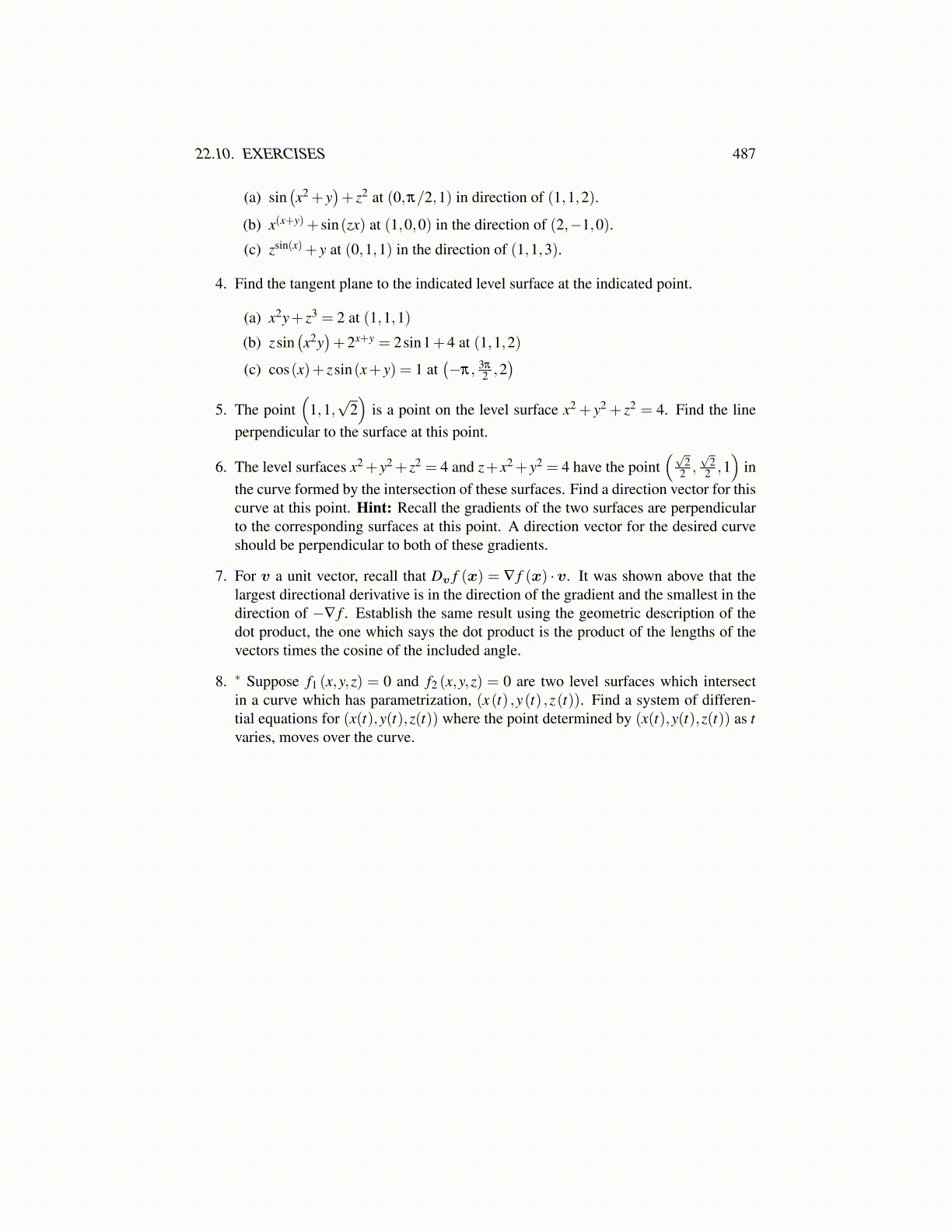
Chapter 23
Optimization23.1 Local Extrema
The following definition describes what is meant by a local maximum or local minimum.
Definition 23.1.1 Suppose f : D( f )→ R where D( f )⊆ Rp. A point x ∈ D( f )⊆Rp is called a local minimum if f (x) ≤ f (y) for all y ∈ D( f ) sufficiently close to x. Apoint x ∈ D( f ) is called a local maximum if f (x) ≥ f (y) for all y ∈ D( f ) sufficientlyclose to x. A local extremum is a point of D( f ) which is either a local minimum or a localmaximum. The plural for extremum is extrema. The plural for minimum is minima and theplural for maximum is maxima.
Procedure 23.1.2 To find candidates for local extrema which are interior points ofD( f ) where f is a differentiable function, you simply identify those points where ∇ f equalsthe zero vector.
To locate candidates for local extrema, for the function f , take ∇ f and find where thisvector equals 0.
Let v be any vector in Rp and suppose x is a local maximum (minimum) for f . Thenconsider the real valued function of one variable, h(t) ≡ f (x+ tv) for small |t|. Sincef has a local maximum (minimum), it follows that h is a differentiable function of thesingle variable t for small t which has a local maximum (minimum) when t = 0. Therefore,h′ (0) = 0.
h(∆t)−h(0) = f (x+∆tv)− f (x)
= D f (x)∆tv+o(∆t)
Now divide by ∆t and let ∆t → 0 to obtain
0 = h′ (0) = D f (x)v
and since v is arbitrary, it follows D f (x) = 0. However,
D f (x) =(
fx1 (x) · · · fxp (x))
and so ∇ f (x) = 0. This proves the following theorem.
Theorem 23.1.3 Suppose U is an open set contained in D( f ) such that f is dif-ferentiable on U and suppose x ∈ U is a local minimum or local maximum for f . Then∇ f (x) = 0.
Definition 23.1.4 A singular point for f is a point x where ∇ f (x) = 0. This isalso called a critical point. By analogy with the one variable case, a point where thegradient does not exist will also be called a critical point.
Example 23.1.5 Find the critical points for the function f (x,y)≡ xy− x− y for x,y > 0.
Note that here D( f ) is an open set and so every point is an interior point. Where is thegradient equal to zero? fx = y−1 = 0, fy = x−1 = 0, and so there is exactly one criticalpoint (1,1).
487